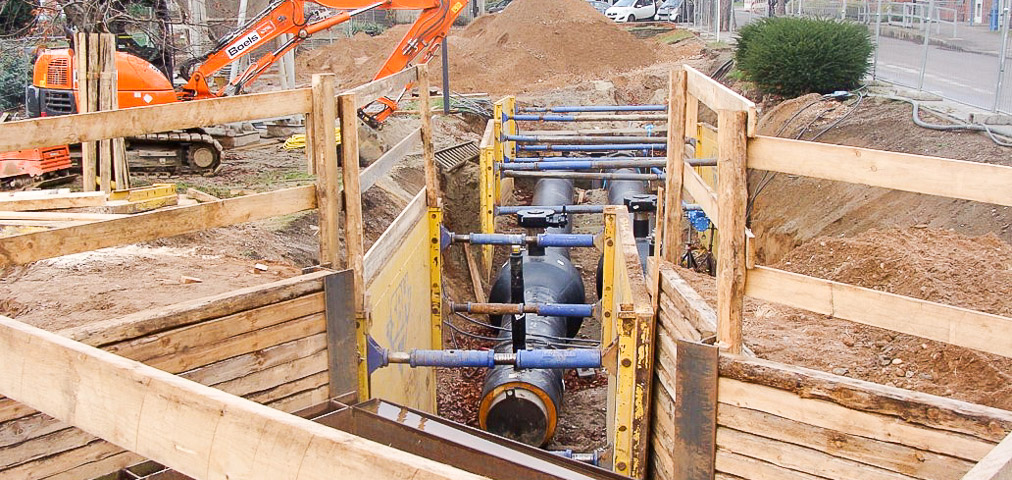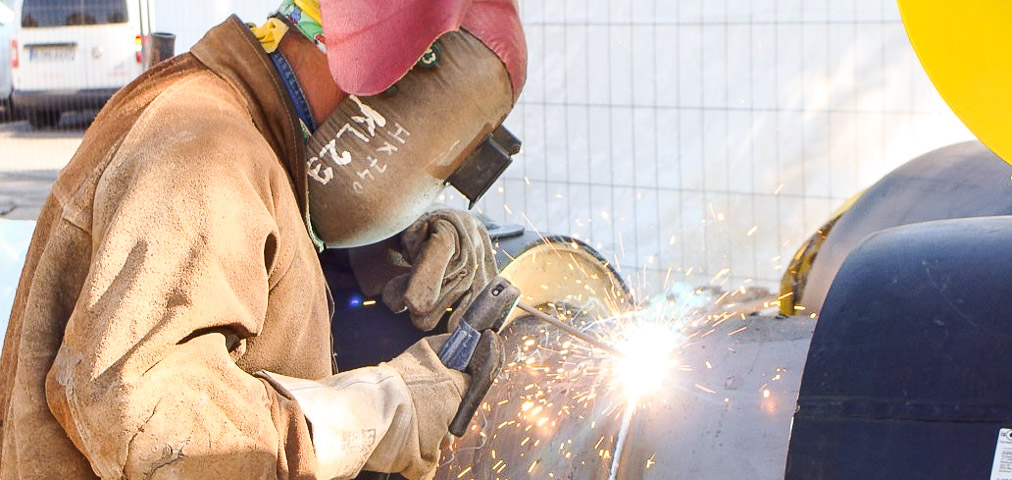University Hospital Gets New Cold Supply
Around 1,800 metres of special pipelines were laid from the new refrigeration plant to the individual hospital buildings.
A new refrigeration plant is currently being installed to ensure that the Düsseldorf University Hospital will continue to benefit from a cold supply in the future. Kremsmüller in Leipzig was commissioned with the cold water piping between the main facility and the various other buildings of the university hospital.
As general contractor, the District Heating and Pipeline Construction Division is responsible for the underground engineering, supply, installation and start-up of the cooling pipeline.
In total, approximately 1,800 metres of pipes in thicknesses ranging from DN 100 to DN 1000 were laid in the plastic sheathing system. But it was not possible to excavate a route everywhere. The areas in front of selected hospital buildings and road crossings required special construction services, which were carried out jointly with a civil engineering professional.
These included the trenchless laying of 87 metres of pipes using the “micro- tunnelling” method. For this purpose, four pits with a diameter of around eight meters and a depth of eight to twelve meters were excavated at the ends of the route. Tunnels were constructed using the thrust boring method in order to push the plastic sheath pipes through and allow them to continue running underground. The project was launched in July 2016 and will go into operation less than a year later.
If you would you like to learn more about this or similar projects, click on the letter symbol and you will be directed to our experts by email.
As general contractor, the District Heating and Pipeline Construction Division is responsible for the underground engineering, supply, installation and start-up of the cooling pipeline.
In total, approximately 1,800 metres of pipes in thicknesses ranging from DN 100 to DN 1000 were laid in the plastic sheathing system. But it was not possible to excavate a route everywhere. The areas in front of selected hospital buildings and road crossings required special construction services, which were carried out jointly with a civil engineering professional.
These included the trenchless laying of 87 metres of pipes using the “micro- tunnelling” method. For this purpose, four pits with a diameter of around eight meters and a depth of eight to twelve meters were excavated at the ends of the route. Tunnels were constructed using the thrust boring method in order to push the plastic sheath pipes through and allow them to continue running underground. The project was launched in July 2016 and will go into operation less than a year later.
If you would you like to learn more about this or similar projects, click on the letter symbol and you will be directed to our experts by email.


